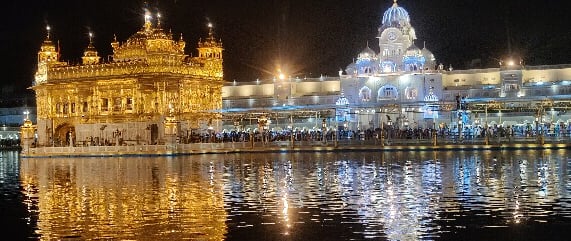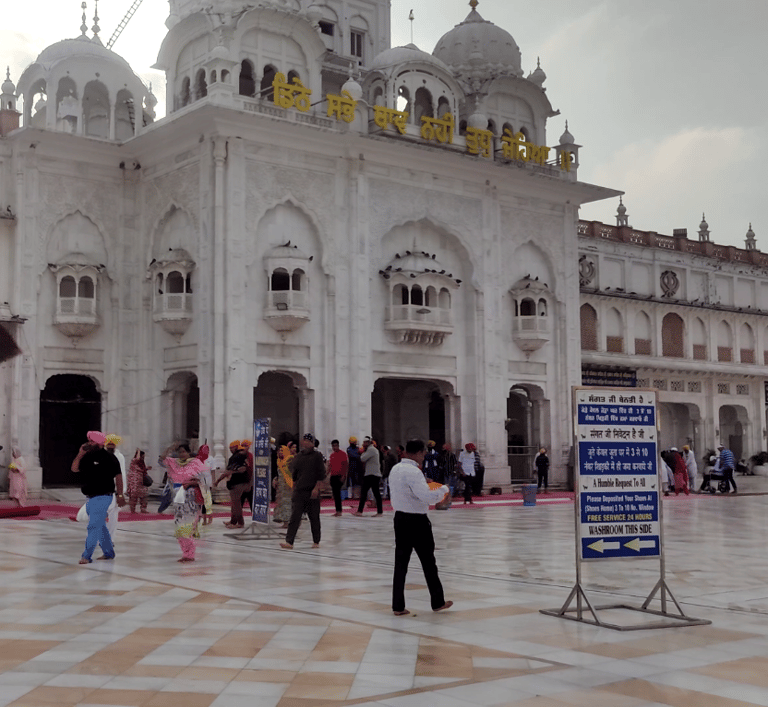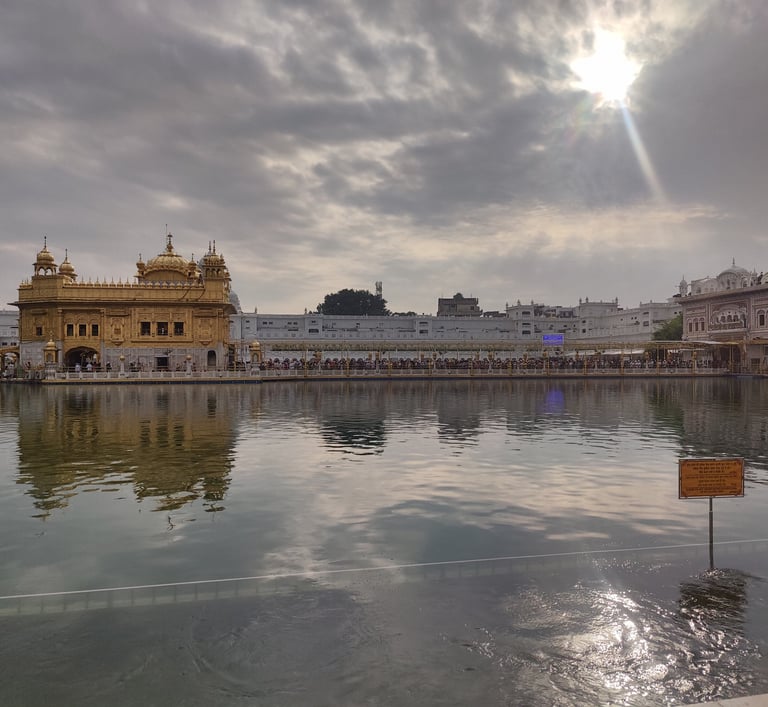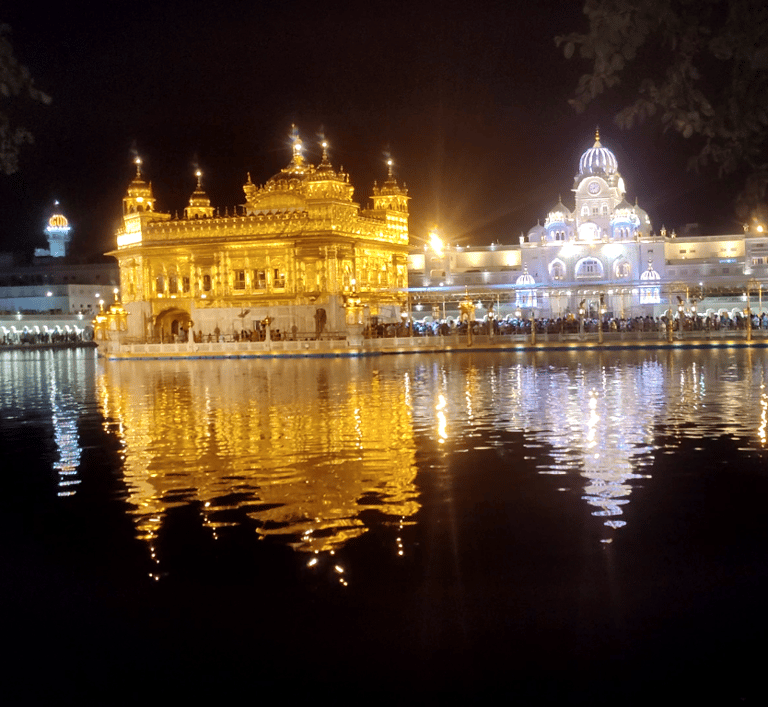Golden Temple Amritsar
More Than Just a Visit, A Heartfelt Experience
TRAVEL
8/30/20254 min read


My trips to the Golden Temple in Amritsar—and yes, I’ve visited a couple of times—have always been more than just travel. Known as Sri Harmandir Sahib, this sacred shrine is the heart of Sikh spirituality, and every visit has left me with a renewed sense of peace.
First Glimpse of the Golden Temple
Walking through the bustling yet narrow lanes of Amritsar, where only battery rickshaws can move around, the moment you step into the temple complex feels like entering another world. The sight of the golden shrine shimmering in the Amrit Sarovar (holy pool) is breathtaking. Whether it’s your first visit or your fifth, that first glimpse never loses its magic.
The evening view is especially magnificent—the temple glowing under the lights, perfectly mirrored in the calm waters of the Sarovar.
A Special Visit with My Parents
I am daring to put a piece of my heart out there, hoping to capture even a fraction of what this visit to Golden Temple means to me. One of my most cherished memories of the Golden Temple was when I brought my parents here on their wedding anniversary. My dad, though from the southern part of India, had always been in awe of Sikhism and deeply wished to visit the Golden Temple at least once in his life.
Watching him walk into the temple complex for the first time, his eyes lighting up in wonder, was something I will never forget. I explored the temple again with him, just like an excited child, soaking in his joy and fulfilment. That day, the Golden Temple wasn’t just about faith—it became about family, gratitude, and fulfilling a long-cherished dream.
Inside the Complex – Darshan Experience
The Golden Temple has two entry gates, both equipped with places to safely keep your shoes. Once barefoot and head covered (a must), you join the stream of devotees moving towards the sanctum. Clothing rules are strictly followed here—one-piece dresses are not allowed—so dress modestly in traditional wear.
The crowd management is exceptionally efficient, with clear queues and volunteers guiding people at every step. On average, it can take anywhere between 1 to 4 hours for darshan, depending on the rush. Photography is strictly not allowed near the sanctum, but you can click pictures at the entrance and around the complex.
When the soulful hymns of Gurbani flow through the air, the experience is beyond words. The calm of the sanctum, the golden reflection in the water, and the devotion around you together create an atmosphere of unmatched peace.
The complex itself is vast, with several important spots beyond the main shrine. The Akal Takht, the highest seat of Sikh authority, stands tall with historical and spiritual significance. Walking through the museum, I learned more about the struggles and sacrifices that shaped Sikh history.
The Langar – An Unforgettable Experience
Every visit to the Golden Temple feels incomplete without the langar (community kitchen). It’s humbling to see thousands being served daily by selfless volunteers. Sitting cross-legged on the floor and dining with people from all walks of life, is an experience that breaks all barriers of class, caste, and creed.
As you walk past the langar hall, you can even hear the uninterrupted jingling of utensils being washed—a reminder of the scale and dedication behind this incredible service.
Why I Keep Returning
Each of my visits to the Golden Temple has been different. Sometimes it’s the calm morning silence, sometimes the majestic evening glow, and sometimes the overwhelming experience of sharing langar. But the visit with my parents will always remain the most special—because it wasn’t just about me, but about fulfilling my dad’s lifelong dream.
From the efficient management of the crowd to the sheer scale of seva (service), every detail reflects the essence of Sikhism—humility, equality, and devotion.
And perhaps, if you ever make your way here, you’ll feel that same peace, that same awe, that same quiet joy that keeps calling me back.
Planning Your Visit to the Golden Temple, Amritsar
Visiting the Golden Temple is not just about darshan—it’s also about soaking in the spirit of Amritsar and its surroundings. Here’s what you need to know before planning your trip:
Best Time to Visit
October to March: Pleasant weather and the temple looks magical in the crisp winter air.
Evenings: The reflection of the illuminated temple in the Sarovar is breathtaking.
How to Reach Amritsar
By Air: Sri Guru Ram Dass Jee International Airport (12 km from the temple).
By Train: Amritsar Junction is well connected to Delhi, Chandigarh, Mumbai, and Kolkata.
By Road: Buses and cabs are available from Delhi (approx. 8–9 hrs) and Chandigarh (approx. 4–5 hrs).
Many travelers prefer taking a Volvo bus or Shatabdi Express from Delhi for comfort.
Stay Options
Hotels and guesthouses surround the temple area, but keep in mind that alcohol, smoking, and non-vegetarian food are strictly prohibited in these hotels.
You can also choose to stay in dharamshalas maintained by the Gurudwara Committee for a more spiritual experience.
Other Experiences to Combine with the Golden Temple Visit
Jallianwala Bagh (5 mins walk) – A historic site that tells India’s story of resilience.
Wagah Border Ceremony (30 km) – Witness the electrifying evening flag-lowering ceremony between India and Pakistan.
Partition Museum – A deeply moving space documenting the Partition of 1947.
Hall Bazaar – Perfect for shopping Phulkari, Amritsari juttis, and spices.
Food Trail – Don’t miss Amritsari kulcha, lassi, and street food around the temple.
Tips for Travelers
Dress modestly; one-piece outfits are not allowed inside the gurudwara.
Cover your head with a scarf or dupatta before entering.
Photography is allowed only at the entrance, not close to the temple.
Darshan can take anywhere between 1 to 4 hours depending on the rush—early morning is peaceful, though queues are shorter in late evenings too.
The langar is a must-experience—listen for the constant sound of utensils being washed, a reminder of seva in action.






